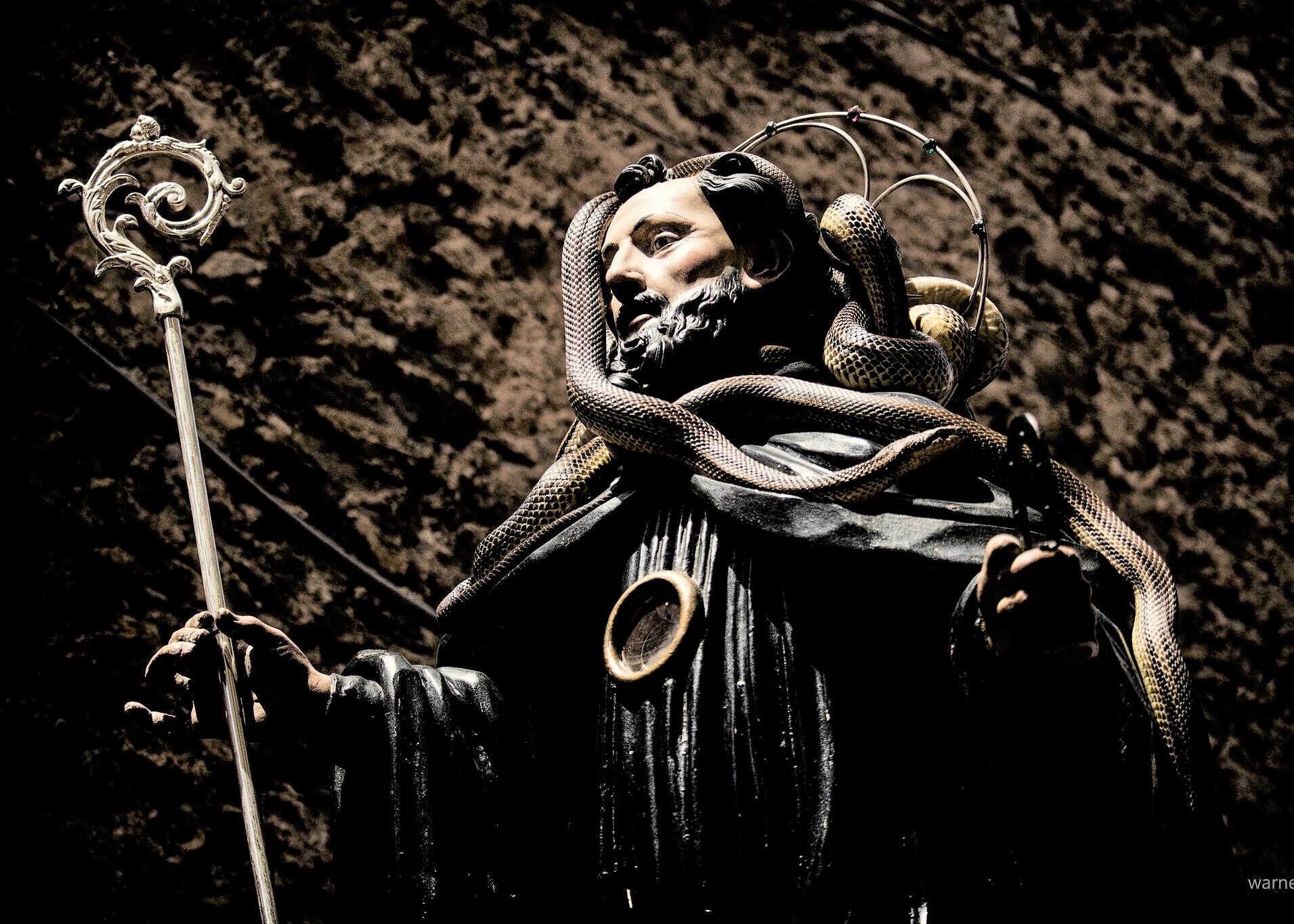

The most famous feast related to snakes both in Italy and in the world is surely the feast of Cocullo, in the province of L'Aquila, in Abruzzo, which is celebrated on May 1st.
Famous are the images of the statue of St. Dominic wrapped by hundreds of snakes, with thousands of people following the procession and touching the snakes of the saint or having their bodies wrapped themselves by them, in a mixture of fear and excitement, shouting to receive a blessing.
In reality, this Saint was born in Foligno (Umbria) in 951 and died in Sora (Lazio) in 1031. This is a typical character who lived in the Benedictine monastic spirituality and founded hermitages in the area of Abruzzo and Lazio. A character who would have been shipwrecked in the medieval hagiography if he had not been associated to a very important tradition: the feast of the snakes. The snake is linked to the domination of poisonous snakes, or rather to the "animic" control of the unconscious.
What characterizes St. Dominic's power over reptiles is the relic of his tooth, versus the reptile's poisoned tooth. As in the myth, Perseus steals Medusa's teeth to take its strength, in the same way St. Dominic through his tooth, takes the vital energy of the snake and passes it to the community. During the procession in Cocullo young women carry round donuts, the meaning is therefore erotic. The donut is a ritual food prepared according to an archaic recipe and expresses the symbolism of fecundity.
Fundamental in the Abruzzese feast, the figure of the Ciarallo. They are the specialist snake collectors, who days before the feast find hundreds of snakes that will be released at the end of the feast. Once it was a very precise sacral role within the Abruzzese and southern society. Anciently the costume of Ciarallo was noble.
Those who had the "domination" of the snake possessed a great value. They were directly associated to the ancient Marsi and to the cult of the goddess Angizia, a very important goddess, considered archaic already in Roman times, from whom the Ciaralli claimed to descend. In ancient times, snake collectors had a sacred function that derived from a hereditary transmission and from an "initiation" and that exercised secret rituals of capture and handling and therefore care and immunization. This meant that in order to handle the poison and not be affected by it, they had to become poison themselves. The Marsi were magical and highly sapiential. A special Italic lineage.
You may be interested
-
'Saffron tourism' takes hold in Italy, harves...
Saffron tourism is the holiday of choice for a growing number of people fascinated by the...
-
‘My money goes a lot further here’: This woma...
After dealing with the death of her mother, losing her job of 10 years and finalizing her...
-
‘Path of Bandits’: Walking Through a Little-K...
150 years ago, at the border between the central Italian regions of Lazio and Abruzzo, the...
-
‘We made everything bear-proof’: the Italian...
Pettorano sul Gizio is a medieval mountain town full of alleys, watchful cats and wooden d...
-
"John Fante Riesce A Parlare Anche Alle Nuove...
Sono stati presentati a Roma i tre finalisti della tredicesima edizione del 'Premio John F...
-
“Dalla parte di John Fante” uscito il nuovo l...
Manca un mese alla XV edizione del ‘John Fante Festival – Il dio di mio padre’ (in program...
-
“Messaggero di sant’Antonio”: Stati Uniti. Cu...
Dal numero di dicembre del "Messaggero di sant'Antonio", edizione per l'estero Un grande...
-
“Welcome home”: l’abbraccio stelle&strisce di...
Bandiere a stelle e strisce, un paese blindato, uomini addetti alla sicurezza delle forze...










